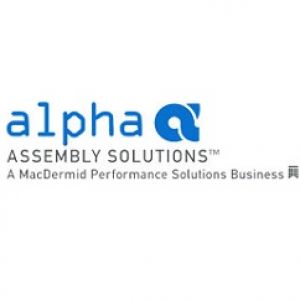Low Temperature Solder for PCB Assembly - The Need, the Benefits and the Options
Posted by Alphaassembly on July 27th, 2017
With the increased penetration of modern consumer electronics in the market, such as mobile phones and music devices, the general push for product development has been largely focused on miniaturization. And as electronic components get smaller and smaller, the commercial world is also moving steadily towards the goal of sustainable and eco-friendly growth - marked by the introduction of RoHS compliant lead-free assembly of electronic devices. As a result, low temperature solder has emerged as the most effective solution to match these new trends in the PCB engineering industry. Let’s take a closer look and explore why low temperature solder is needed, the benefits it offers for PCB assembly and the best options to choose for these applications.
Low Temperature Solder - The Need
The RoHS (Restriction of Hazardous Substances) directive created a specific challenge for the electronics manufacturing industry - the requirement of higher reflow process temperatures for lead-free PCB assembly. Increased temperatures could potentially damage SMD components while negatively affecting the solder joint quality, especially when small solder paste quantities are being used for developing miniaturized circuit assemblies. This potential thermal damage can be completely avoided by using a low temperature solder.
Low Temperature Solder - The Benefits
The biggest benefit of low temperature solder is its potential to streamline the electronic assembly process, mainly by eliminating the wave soldering or selective soldering step altogether. This creates various process based advantages in the form of lowered cost of production, reduced energy and labor requirements and increased daily throughput due to reduced process-cycle-time. The low temperature profile of this process also allows manufacturers to choose less expensive PCB substrates when appropriate, thereby making production processes more cost effective and resource efficient. It also reduces overall oven maintenance costs by allowing manufacturers to use low cost laminates that do not need to endure multiple high temperature thermal excursions.
Low Temperature Solder - The Options
When it comes to soldering, Tin (Sn) serves as the base metal of choice for creating suitable solder bonds for different PCB applications. Tin has a melting point of 232oC, and therefore, other metals have to be added to create alloys with a lower melting temperature threshold, thereby making it suitable for PCB applications. After the introduction of the RoHS lead-free directive, Gallium (Ga), Indium (In), Bismuth (Bi), Silver (Ag) and Cadmium (Cd) remain the only viable metals that can be combined with Tin to create suitable low temperature solder alloys. However, Cadmium is not used in such applications due to its high toxicity while Gallium based alloys become impractical because they typically become liquid-like in room temperatures and Indium is more expensive and hence, less practical for industrial-scale usage.
As a result, Bismuth and Silver have emerged as the most preferred low temperature solder alloys, out of which, the SnBiAg combination can be considered the most effective and beneficial option for several reasons. With a melting point below 140oC, this soldering alloy exceeds most PCB industry expectations offering increased resistance to thermal fatigue, top notch reliability and excellent electrical resistance properties. Contact Alpha Assembly Solutions for more information.
About the Author:
Alpha Assembly Solutions, Inc. is the global leader in the development, manufacturing and sales of innovative specialty materials used in a wide range of industry segments, including electronics assembly, power electronics, die attach, LED lighting, photovoltaics, semiconductor packaging, automotive and others. Since its founding in 1872, Alpha has been committed to developing and manufacturing the highest quality specialty materials.


